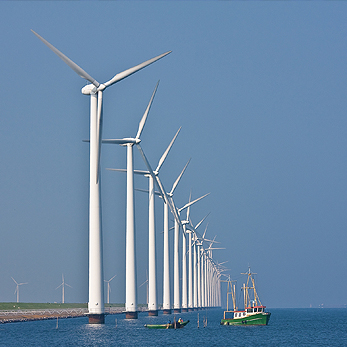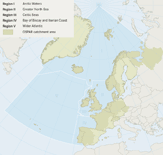A range of other human uses of the sea provide goods and services for OSPAR countries. These include: shipping; tourism and recreational activities; wind farms; cables; land reclamation, coastal defence and other structures; artificial reefs; mineral extraction; and dredging and dumping (including dumped munitions). These activities exert physical, chemical and biological pressures on marine ecosystems which need to be carefully managed so as to avoid unwanted impacts. Some of these impacts have been covered in Chapters 4 and 5. Under the Biodiversity and Ecosystems Strategy OSPAR has been considering the impacts from these activities to determine whether any specific measures are needed to ensure the protection of ecosystems and biodiversity. Many of these activities are regulated through national procedures, including licensing and the application of environmental impact assessments (EIA). Shipping is regulated largely through the International Maritime Organization (IMO). OSPAR is developing tools to help with the socio-economic evaluation of these activities, as a basis for valuing ecosystem services. There are also specific impacts which result from more than one activity, such as marine litter, microbiological contamination, non-indigenous species and underwater noise. Integrated management based on an ecosystem approach to management is essential for balancing the demands of different uses of the sea and nature conservation interests.
OSPAR Strategy objective for biodiversity and ecosystems
To protect and conserve the ecosystems and the biological diversity of the maritime area which are, or could be, affected as a result of human activities, and to restore, where practicable, marine areas which have been adversely affected.
The Strategy includes the following actions:
- Assessment of the impact of human activities on the marine environment.
- Drawing up of programmes and measures for controlling human activities that have an adverse impact on species and habitats that need to be protected or conserved where this is necessary.
- Drawing the attention of the IMO to questions concerning maritime transport on which OSPAR considers that action is desirable.


